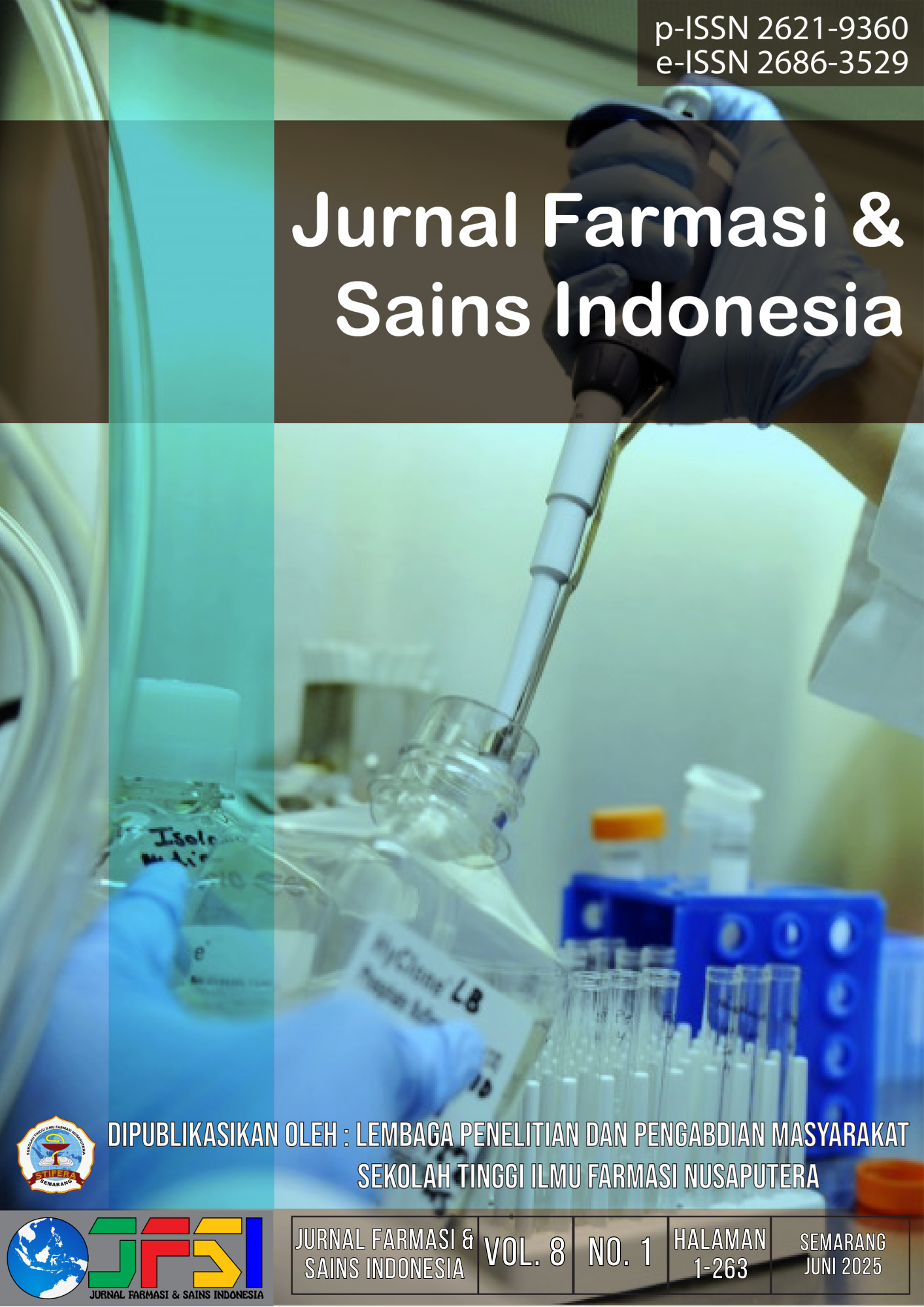The Effect Of Antipsychotic Administration On Metabolic Syndrome In Schizophrenia Patients In Hospital X Jakarta For The Period July 2023 - December 2023
Main Article Content
Abstract
Schizophrenia is a severe mental disorder requiring long-term treatment with antipsychotics. Although effective in managing psychotic symptoms, antipsychotics such as Haloperidol (first-generation) and Clozapine (second-generation) carry risks of inducing metabolic syndrome, particularly hypertension and obesity. This study aims to compare the effects of Haloperidol and Clozapine use on the incidence of metabolic syndrome, specifically hypertension and obesity, in schizophrenia patients based on the 2021 PERKENI criteria. This analytical non-experimental study used a cross-sectional design with retrospective data from medical records of inpatient schizophrenia patients at X Regional Special Hospital Jakarta from July–December 2023. A total of 95 patients were selected by purposive sampling. Data were analyzed using the Mann-Whitney test. The majority of patients were male (56 patients, 58.95%) and aged 31–50 years (44 patients, 46.32%). Haloperidol was used by 50 patients (52.63%), while Clozapine was used by 45 patients (47.37%). The medication was administered orally as a single agent, 1–3 times daily, with doses ranging from 0.5 mg to 100 mg and an average treatment duration of 30 days. Total drug administrations were recorded 133 times due to some patients receiving more than one dosage form (tablet and single compound). Metabolic syndrome was observed in 40 patients (42.11%). Haloperidol significantly increased blood pressure compared to Clozapine (p = 0.036), but no significant difference was found in body mass index (p = 0.885). Haloperidol poses a higher risk of inducing hypertension than Clozapine. Routine blood pressure monitoring is essential during therapy.

